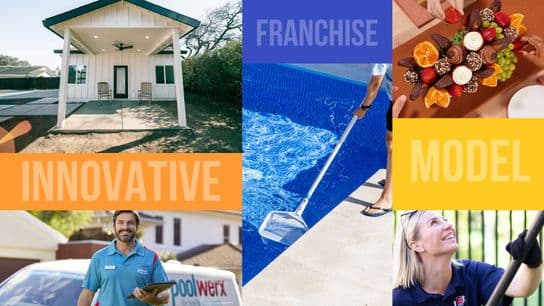Where Franchise Development Sites Will Go Next
No Limit Agency’s Michael Palm predicts the future of franchise development websites
Over the past few years, franchisors have placed greater and greater importance on their franchise development websites. Once considered secondary to traveling expos and third-party franchise portals, development sites are quickly becoming the primary tool franchisors use to attract prospects and convert them into applicants.
As the strategy surrounding development sites has evolved, so too have the sites themselves. Where just a few years ago a franchise development site might have a dozen pages, each packed with a brand’s history, product information and financial requirements, today’s development sites are typically more streamlined, using fewer pages and a more measured approach to content.
As development pages continue to evolve, we asked Michael Palm, Senior Project Manager, Digital at franchise marketing and PR agency No Limit Agency*, for his predictions on where development sites will go next. Here’s what he had to say.
[No Limit Agency is a sister company to 1851 Franchise.]
1. Mobile-first
Palm: We are just starting to see development sites designed specifically for mobile use, rather than desktop. Most sites that were not built within the past year were designed for a desktop experience first and then modified to work on mobile. That’s already an outdated design, and it’s only going to get worse. 60 to 70 percent of traffic is coming from mobile users, so it’s essential that development sites are designed to accommodate that first.
2. Fewer pages
Palm: In recent years, I’ve seen a lot of sites migrate from extensive, multi-page experiences to short, one-to-five-page websites, and I think that trend is going to continue. It’s not just an aesthetic preference; fewer pages, maybe counterintuitively, actually makes it easier for franchisors to tell their story. You have control over what the user sees rather than allowing them to click randomly through 25 pages.
3. Agreement on content
Palm: One thing that a lot of franchisors are still struggling with is figuring out exactly which parts of their story to tell on their development site. A lot of franchisors — too many — lean toward telling their whole story, but that’s a mistake. Too much content or content that is irrelevant to the stage of a client’s discovery process is distracting. As franchisors start to get a better sense of what information is driving conversion, I think we’ll start to see more agreement on exactly what content franchisors should include on their development sites. At the same time, I think we’ll see a lot of creativity as franchisors experiment with what works.
4. Comprehensive web strategy
Palm: A lot of franchisors are putting all their efforts into the site itself. That’s a mistake, and something I think we’re going to see change in the next few years. The actual development site is just half of the equation. You need to have a strategy to drive users to the site, including pay-per-click advertising and PR. I think we’ll start to see franchisors putting a much greater emphasis on the tools they use to bring eyeballs to their development sites.
5. Emphasis on inquiry
Palm: The primary call to action for a lot of development sites these days is to get people to apply, but that’s a big ask, especially if it’s a candidate’s first time checking out the site. If an applicant isn’t ready to apply, they are likely to leave the site without an opening for a next step. I’m a big advocate for inquiry forms and downloadable brochures. If you can get a user to fill out an inquiry form or offer their email address for a brochure, then not only do you have a way to follow up with them, but you’ve encouraged them to make a small commitment to the process.
*This brand is a paid partner of 1851 Franchise. For more information on paid partnerships please click here.









